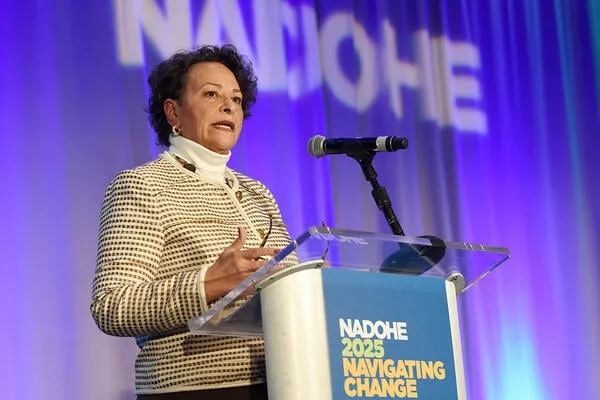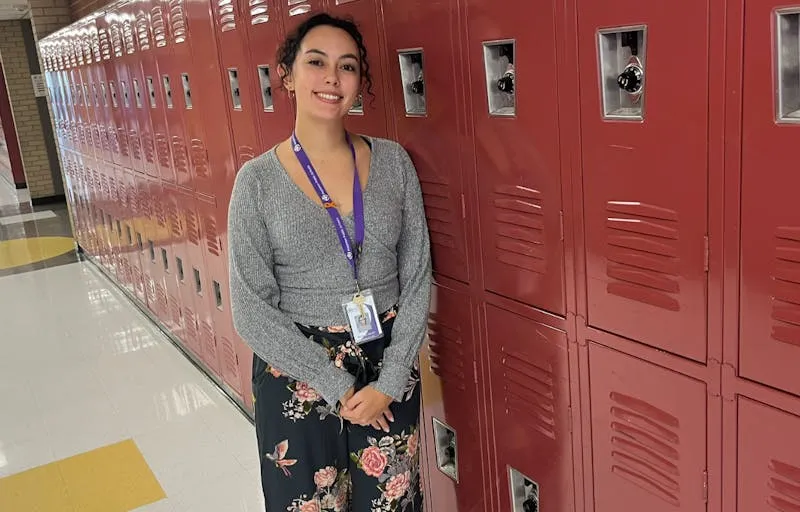Starting this month, millions of adults and children are at risk of losing food access provided through the Supplemental Nutrition Assistance Program (SNAP) without a congressional deal to fund the federal government.
That means the meals served up daily by school cafeterias may suddenly take on extra significance. They are a vital source of nutrition for some students, as about 7.2 million children were estimated to live in homes facing food insecurity as of 2023.
“School meals are as critical to learning as textbooks and teachers,” according to the School Nutrition Association.
Children whose families receive SNAP benefits qualify for free school meals, according to the U.S. Department of Agriculture. Experts say the potential loss of funding for SNAP due to the ongoing government shutdown won’t affect the free school meal program.
Here’s a look at how school lunch has evolved over the decades and the role it plays today.
Evolution of School Lunch
In the years following President Harry Truman’s 1946 signature of the National School Lunch Act, students would have been treated to dishes like fish shortcakes, liver-sausage loaf and orange coconut custard for dessert.
The development of these recipes was a scientific pursuit that started in a government school lunch laboratory. Main dishes were field-tested in 19 states.
“Acceptance by children of the dishes prepared from the individual recipes varied considerably by schools,” according to a USDA school recipe book from 1953. “Three proposed recipes were discarded on the basis of the field tests.”
School menus have changed considerably since then, with legislative directives including the Child Nutrition Act in the ’60s, the Healthy, Hunger-Free Kids Act in 2010 and the “Make America Healthy Again” movement that is taking aim at food dye and processed foods in schools.
Meanwhile, earlier this year, the USDA ended a program that funded schools’ purchases of produce from local growers.
As schools work to meet new federal nutrition guidelines, like limits on sugar, they’re also turning to creative ways of meeting those goals with strategies like from-scratch cooking — back to the program’s origins but, mercifully, with more-modern recipes for popular dishes like ramen.
The Need for School Lunch
Tufts University researchers found in 2021 that schools are where children are getting their most-nutritious meals, with food quality in schools improving during the research period regardless of children’s race or income. But school meals only accounted for 9 percent of an average child’s calorie intake over the course of a year, according to the findings.
Dariush Mozaffarian, dean of the Friedman School of Nutrition at Tufts and senior author of the study, said at the time that the findings were particularly salient given schools were working to safely reopen following pandemic-related closures.
“Schools are now the single healthiest place Americans are eating,” Mozaffarian said. “Our results suggest substantial nutritional harms for millions of kids who have not been consistently receiving meals at school and must rely on other sources.”
While SNAP recipients — roughly 28 percent of whom are children ages 5 to 17 — are at risk of losing access to those food benefits due to the government shutdown, experts say that free school meal programs are expected to continue operating. In fact, schools will likely be part of filling the food access gaps for students. States like New York are exploring whether schools can send students home with food, and school districts in cities like San Antonio are encouraging families impacted by the potential loss of SNAP funds to apply for reduced-price lunches for their children.
“School meals are not threatened yet, and the Community Eligibility Program that makes meals free for an entire district if enough students are eligible also is not yet threatened,” Pamela A. Koch, a Mary Swartz Rose Associate Professor of Nutrition and Education at Columbia University, told EdSurge in an email interview. “This is a good time to elevate the school meals program to make sure that school students whose families will not get SNAP benefits have other options, such as school meals (as well as food pantries and other programs), to help them fill in the gaps. As we know, school students need to be well-nourished to be ready to learn.”
School Lunch Debt
Among schools that don’t offer free meals to all students, nearly 97 percent of school nutrition leaders said they experienced challenges with unpaid meal debt, according to recent survey results from the School Nutrition Association.
Unpaid meal debt accrues when schools serve food to students who don’t qualify for free meals but also don’t have enough money to pay, typically with the understanding that parents will cover the balance later. While the USDA does not have a blanket policy on how schools should handle lunch debt, it encourages them to avoid “lunch shaming” that embarrasses students — like throwing away food trays when a student’s account shows debt.
“To ensure every student is nourished and ready to learn, SNA advocates for providing all students school meals at no charge. Unfortunately, federal school meal funds only cover the full cost of meals served to students eligible for free meals,” according to the School Nutrition Association.
The average unpaid meal debt has been rising for about a decade, according to the School Nutrition Association’s recent school nutrition survey, reaching $6,900 per school in the fall of 2024.
In the three years since the federal government closed a program that provided free lunch and breakfast waivers to students during the height of the pandemic, schools have struggled with increasing meal costs and debt from students who are unable to pay for their meals.
The internet is awash in inspirational stories about youngsters who raise thousands of dollars to wipe out their classmates’ lunch debt. The CEO of the popular bakery chain Crumbl recently paid off the lunch debt of students in two whole school districts. Those gestures exist alongside reactions from observers who hear about children carrying debt and wonder, “What is even wrong with this country?”
Families are “having to make those tough decisions of, ‘What am I going to send for lunch? What bills do I pay? What am I going to do here?’” Erica Biagetti, director of Food & Nutrition Services at Cheshire Public Schools in Connecticut, told NPR.


